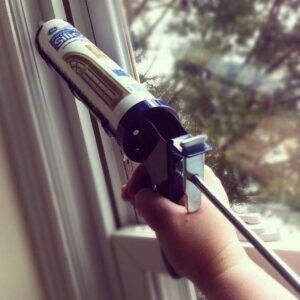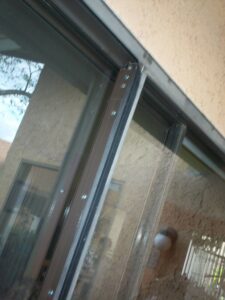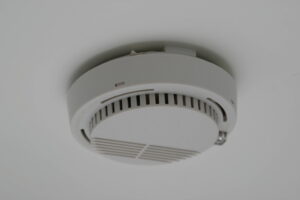Home Preparations to Make Before Winter

With winter rapidly approaching, every homeowner needs to be thinking about what should be done to protect their home during the bitter, cold months of late November and December. Whether there’s going to be snow on the ground this year or not is difficult to judge, but certainly any issues with the home maintenance should be taken care of so you don’t later regret not doing so.
Here are some suggested home preparations to make before winter hits hard.
How’s the Heating?
If you haven’t had course to turn on the heating for a few months, who knows how it’s going to perform when you first turn it on. It could start, sputter and then die out on you. Or, it may run perfectly smoothly. The age of your heating system and the units attached to it has a bearing on that, as does the type of heating.
If you use a heat pump or an old furnace, which is not as common, then check that they are functioning right. You might want to get an inspector to verify that there’s no leaking of carbon monoxide to worry about. If you’ve had some issues with the system in the past, now’s the time to get it checked properly so it doesn’t develop a fault on one of the coldest winter months and leave you freezing!
Window Winterizing

You might not think of window winterizing as a thing until you learn that one-third of heat is lost through windows and doors in the home. Bad insulation and ineffective windows and doors leave much to be desired. We’re even guilty of sometimes leaving the front door open when someone is just parking up which costs money in lost heat with the heating system working overtime when the thermostat registers the drop in temperature near the front of the home.
It’s not the glass in windows that is typically the problem, but more the seals around them and the borders. They can develop unnoticed cracks that let warm air find the outside (or outside cooler air find its way indoors too).
Deal with the issue by using a waterproof caulking around the edges of the window or weather stripping that covers all along the edges (not just the affected area) to seal warm air inside. A plastic film over the windows is also somewhat effective in reducing heat loss. If you don’t feel up to doing that or don’t have the time, you can always use an hourly handyman repairs service to take care of it for you. Just don’t leave it too late as they are likely to be busy nearer Christmas time with last minute jobs from homeowners who left it very late to act.
Door Winterizing

With door winterizing, you’d be doing many of the things that you’ve just done with the windows. You want to be checking around the door frame for excessive gaps. Hold your hand over the gap between the door and the doorframe to check for a draught. Run your hand along the edge and all around the door to see if there’s a discernible draught. If there is, you can put up a weather strip along the edge of the door frame to create a better seal and block the cold air coming in. It’s easy to fit as it has an adhesive on one side once the tape is removed.
If you have a front door or back door that includes window panes, check the edges to determine if there is any airflow leakage there. Add some caulking or weather stripping to resolve the issue.
It’s also a good idea to buy a long draft stopper that lines the bottom of the door and prevents cold air from coming in. It’s something that you might have seen your grandmother use, but perhaps you don’t have it yourself; if not, now’s the time to buy one.
Guttering and Drains

Get a ladder and climb up to check the state of the gutters all around the property. Be careful not to fall off the ladder – have someone to hold the ladder for you the entire time that you’re up there – because the number of falls off a ladder is surprisingly high.
Check the gutters for accumulated leaves and other debris. If there are any nearby overhanging branches from trees, then the gutters will act as collectors for all sorts of debris. When blocked up, the water flow from rain or ice will overflow the gutters and fall down to the ground. Not only is this a hazard for people walking nearby, but if the outside temperature hits freezing, that water will quickly turn into slippery ice. Then you really have a risk every time you go outside.
Check the drains that the gutters feed down to. Make sure they don’t have anything blocking them. That might be leaves, but it could also be sticks, and other things. Use a drain cleaning solution – they’re usually little granules you sprinkle on the affected area and leave for a while to dissolve the debris – and then wash it away. This allows the water to better escape down the drain, so you will avoid a flood during winter when it rains or the snow melts.
Inspect the Yard
Ensure all gardening equipment is put away neatly so that it does not cause an accident. Put the hose line away by winding it up and tie it off. For properties in colder climates, check all taps to ensure they’re turned off all the way to prevent water unnecessarily leaking. If it freezes, the leaked water will too.
Check the shed is locked up and the area around the compost heap is not going to make it too slippery to approach later.
Adjust the Heating
Once you know that the heating is operating okay, it’s time to adjust the temperature if you haven’t done so already. This may be something you have to adjust several times. Watch the outside temperature drop as the weeks go on and increase the temperature setting to keep your home comfortable.
Also, bear in mind that it’s not useful to go all out by setting the temperature very high and only doing it once as you’ll constantly be going from one extreme to the other. It’s also a good idea to wear warmer clothing and have the heating set a few degrees lower if you want to save money on your utility bill and avoid a shock payment increase once the winter is over.
Check the Detectors

It’s been found that undetected carbon monoxide leakage and fires happen more often in the winter because homeowners are using their heating systems. For this reason, before winter sets in, be sure to check that both your carbon monoxide and fire detectors are functioning properly. Consider whether the battery has enough juice remaining to cover the winter season. Does it alert you when the battery is getting low?
There’s quite a bit to do when winterizing your home. The older the property, the more there is to do. The older appliances need more TLC as do older homes. Bear in mind that even newer double-glazed windows can have problems around the frame or window sill area. Don’t take anything for granted when winterizing. Being thorough by checking everything early on avoids problems later that are difficult or expensive to fix.